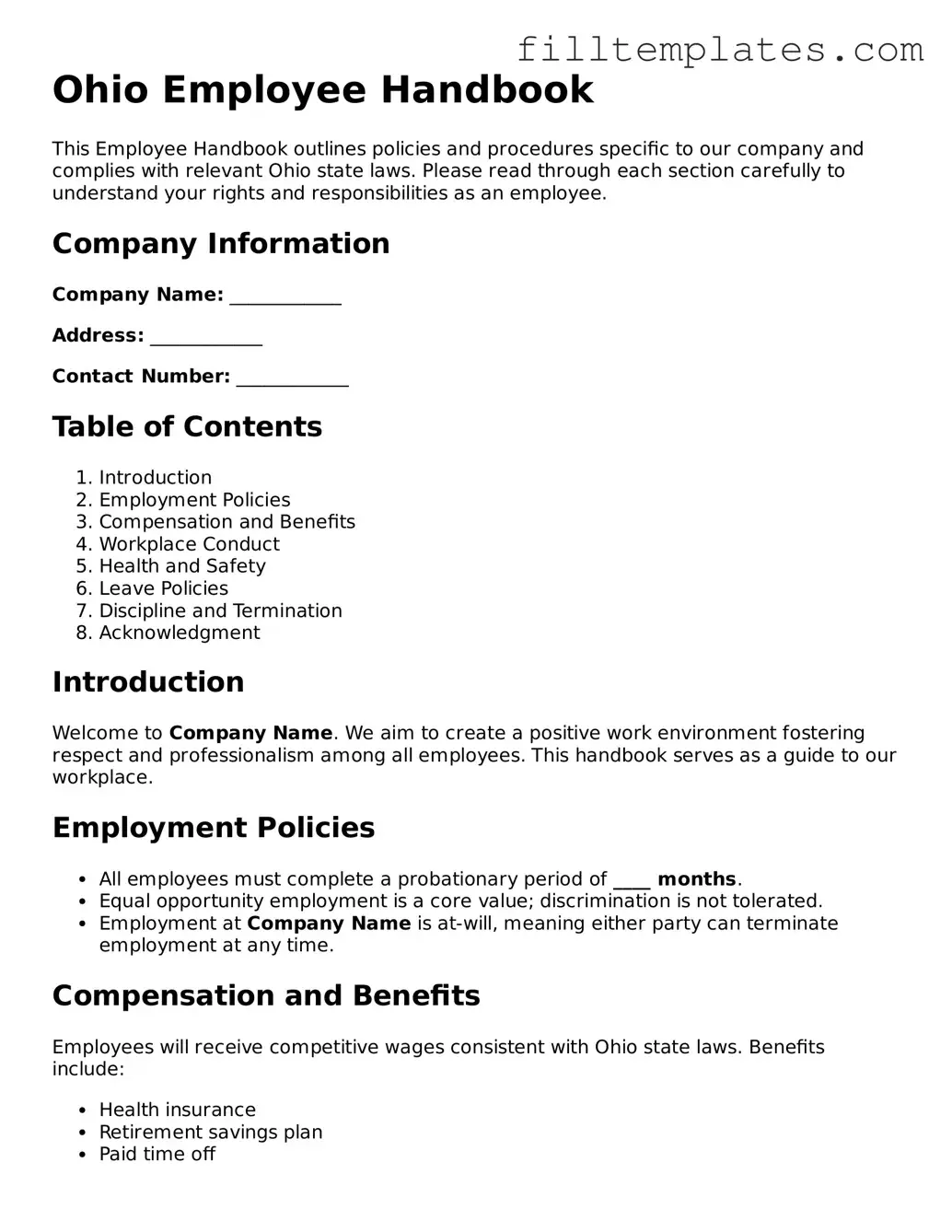Ohio Employee Handbook
This Employee Handbook outlines policies and procedures specific to our company and complies with relevant Ohio state laws. Please read through each section carefully to understand your rights and responsibilities as an employee.
Company Information
Company Name: ____________
Address: ____________
Contact Number: ____________
Table of Contents
- Introduction
- Employment Policies
- Compensation and Benefits
- Workplace Conduct
- Health and Safety
- Leave Policies
- Discipline and Termination
- Acknowledgment
Introduction
Welcome to Company Name. We aim to create a positive work environment fostering respect and professionalism among all employees. This handbook serves as a guide to our workplace.
Employment Policies
- All employees must complete a probationary period of ____ months.
- Equal opportunity employment is a core value; discrimination is not tolerated.
- Employment at Company Name is at-will, meaning either party can terminate employment at any time.
Compensation and Benefits
Employees will receive competitive wages consistent with Ohio state laws. Benefits include:
- Health insurance
- Retirement savings plan
- Paid time off
Workplace Conduct
All employees are expected to adhere to the following conduct standards:
- Maintain a professional appearance.
- Show respect to colleagues and supervisors.
- Follow company policies and procedures diligently.
Health and Safety
Your safety and well-being are our primary concerns. We comply with OSHA regulations and provide safety training as necessary. Please report any hazards to your supervisor immediately.
Leave Policies
Employees are entitled to various types of leave, including:
- Sick leave
- Vacation time
- Parental leave
All leave requests must be submitted in writing and approved by a supervisor.
Discipline and Termination
Failure to comply with company policies may result in disciplinary actions, which can range from verbal warnings to termination. Serious violations may warrant immediate dismissal.
Acknowledgment
I, ___________________, acknowledge that I have received and read the Employee Handbook for Company Name. I understand its contents and agree to comply with the outlined policies and procedures.
Employee Signature: ___________________
Date: ___________________
